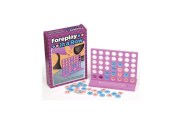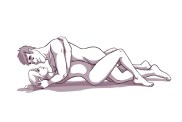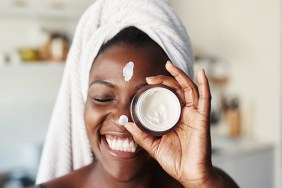A few months after my son was born, he developed scaly red patches on his legs, arms, and back. He had eczema. Baby eczema, to be more specific. The spots would come and go, often appearing worse after bathtime or swimming in the local pool, so I took him to the pediatrician. Fortunately, I discovered that eczema in infants is common. What turned out to be a mild case of eczema could be treated fairly easily with a gentle emollient and shorter baths. If your child has eczema (or you suspect she does), there are plenty of ways that you can help her, too. We consulted the pros to find out what causes baby eczema, how to treat it, and more.
What is baby eczema?
Also known as atopic dermatitis, baby eczema is a dry, itchy skin rash, says Adelaide A. Hebert, MD, professor of dermatology and pediatrics at the University of Texas Medical School in Houston, Texas. Approximately 1 in 5 babies get eczema and it can last into adolescence (and, in some cases, adulthood). Unfortunately, eczema is a chronic relapsing condition, so your baby may experience flare-ups, even after periods of clear skin.
What causes eczema in infants?
Eczema tends to occur in babies with a family history of asthma and allergic conditions such as hay fever. “Flare-ups can be triggered by different factors for different people,” says Jody Levine, MD, Director of Dermatology at Plastic Surgery and Dermatology of NYC. Triggers include upper respiratory infection, or a sensitivity to the chemicals in detergents or certain skin care products. Low humidity, especially during cold season, can be a factor; for others, summertime makes eczema worse because sweat or chlorine from the pool can irritate skin. Your baby’s skin may also be deficient in ceramides (waxy lipid molecules) or filaggrins (proteins), both of which help the skin retain moisture.
What are the symptoms of it?
Baby eczema appears in dry, red patches on the skin, often showing up on the cheeks and scalp, and spreading to the arms, legs, chest, or other parts of the body. It may also develop in tiny red bumps. In more severe cases, the skin may crack and sometimes bleed and ooze fluid. Other signs of baby eczema to look out for, according to board-certified dermatologist Alan Dattner, MD, include:
- Honey combing of the skin
- Yellowing of the skin
- Open sores
- Enlarged lymph nodes, which can be found throughout the body
Can eczema be cured?
Not yet. However, Dr. Hebert says that in the United States there are currently more than 100 clinical studies and trials involving eczema, so a cure may be possible one day.
How is baby eczema treated?
Although there is currently no cure for eczema, there are plenty of ways to treat it and prevent flare-ups, including:
- Using a gentle cleanser on your baby’s skin and moisturizing it twice daily
- Shortening his bathtimes and adding emollients to his bath water
- Applying topical steroid cream (if prescribed by your baby’s pediatrician)
- Giving antihistamines to babies who itch badly at night (consult your pediatrician first)
When should you consult your pediatrician about your child’s eczema?
Make an appointment with your baby’s doctor as soon as you notice abnormalities on her skin, says Dr. Levine. Although it’s tempting to consult Dr. Google, you really need to have your child examined by his pediatrician, to ensure that she gets a proper diagnosis and treatment.
Eczema can be a serious condition, but it doesn’t have to rule your baby’s life. With a good skincare regime and advice from your pediatrician, your baby’s eczema should be manageable.
Photo: Getty








